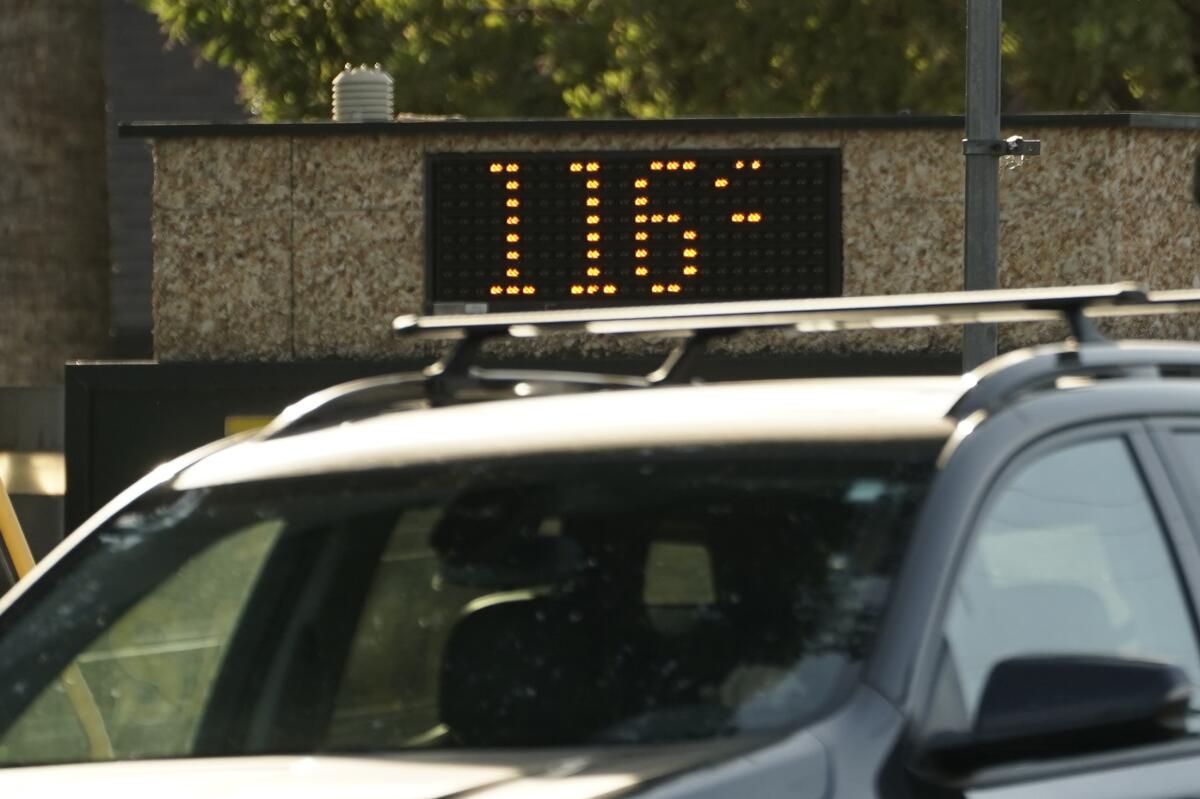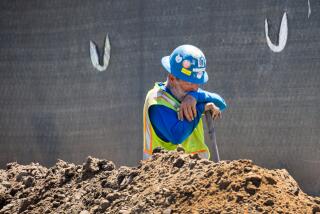Editorial: The 2022 heat wave killed 395 Californians. It shouldn’t have taken so long to find out

The record-breaking, 10-day heat wave that baked California in September 2022 pushed temperatures up to 109 in Long Beach and 116 in Sacramento and the power grid to its limits. It also killed 395 people, according to a new estimate by state health officials.
That’s more than four times as many deaths caused by California’s deadliest wildfire. The fact that it took nearly a year for the public to find that out, and that officials can’t say how many people fell ill or died in other severe heat waves in recent years, shows they still aren’t treating heat waves like the urgent disasters they are.
The excess-death analysis conducted by the California Department of Public Health is a step in the right direction by state officials who have pledged to better monitor and respond to extreme heat. But it still took too long, and comes after years of doing nothing to get an accurate count of heat-related deaths, even as the state suffered some of its worst heat waves on record.
An Arizona congressman has proposed fixing that. It makes sense considering how destructive, and increasingly common, high temperatures have become.
Californians shouldn’t have to wait a year after a disaster for the death tally. We need routine and timely tracking and reporting of heat-related illnesses and deaths, so that authorities don’t keep grasping in the dark and can be held accountable for their response as the deadliest climate-fueled disasters become more frequent and dangerous.
In the analysis of the heat wave from Aug. 31 to Sept. 9, 2022, health officials used data from death certificates to calculate what is known as excess mortality, the number of additional deaths above what would normally be expected. By comparing those 10 days to other periods during the summer of 2022, their analysis found a 5% increase in deaths, or 395 more, than would be expected absent the heat wave.
It also yielded distressing data on the heat wave’s unequal toll. Coastal counties in Southern California were the hardest hit, accounting for 80% of excess deaths. And the populations with the biggest increase in deaths were working-age people between ages 25 and 64 and Latinos. That contrasts with past research that has found that the very young and very old are at greatest risk of dying. And it suggests authorities are failing to protect workers from this worsening climate hazard.
How can city officials help save lives during heat waves? Make cooling a requirement for habitation, like it is already is for heating during cold weather.
California Public Health Director Tomás Aragón said the analysis was a response to a Los Angeles Times investigation in 2021 that found state officials were chronically undercounting heat-related deaths.
Heat is such an insidious killer because it acts as a general stress on the body and exacerbates a wide range of health conditions, including heart, lung and kidney problems. Healthy people working outdoors or exercising are at higher risk of heat stroke. Heat-related deaths are often recorded as caused by heart attack, respiratory failure, dehydration or accidental causes and are dramatically underreported in official records.
There’s preliminary evidence that assigning categories and names to heat waves, like we already do with hurricanes, could help prevent deaths.
There is an inherent lag to counting excess deaths because death certificates can take months to finalize. But the state’s analysis used death records obtained in March, and public health experts say the health department is still moving too slowly and question why it took officials nearly a year to put out a relatively straightforward estimate.
David Eisenman, a professor of medicine and public health who co-directs the UCLA Center for Healthy Climate Solutions, said the state needs to do more robust, peer-reviewed excess-death studies but should also be conducting rapid assessments released within a few months after major heat waves.
That’s not actually good enough. The president must scale up his response to the climate crisis accordingly and follow through with bold new actions.
State health officials should complete these excess-death estimates annually, and for every major heat wave, starting this year. And if they won’t commit to doing so, California lawmakers should step in and require it. One-off studies aren’t enough. A similar analysis years ago found that a severe heat wave in California in 2006 killed more than 650 people. But California officials did little to confront the problem in the intervening years.
The state needs a consistent way to gauge whether actions like the development of a heat wave ranking and early warning system, tougher workplace safety standards and cooling infrastructure such as air conditioning, trees and reflective pavement are making a difference.
Last year the California Legislature allocated $10 million a year for the Department of Public Health to develop a statewide system to track, report and respond to heat-related illnesses and other climate-related health conditions in real time — which the department hopes to have up and running in early 2024. Real-time information on emergency room visits and 911 calls can be used while a heat wave is unfolding to detect which parts of the state are being hit hardest and target the response.
Combined with other actions, such as requiring air conditioning in housing and making heat waves eligible for federal disaster aid, such measures could make progress against a largely preventable cause of death that officials at all levels of government have failed to address adequately. But we’ll never know unless they start consistently tracking the death toll.
More to Read
A cure for the common opinion
Get thought-provoking perspectives with our weekly newsletter.
You may occasionally receive promotional content from the Los Angeles Times.














